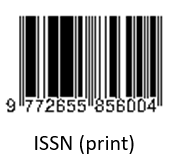Optimization of Vacuum Forming Parameter Settings to Minimize Burning Defect on Strawberry Packaging Products Using the Taguchi Method
(1) Manufacturing Design Study Program, Politeknik ATMI Surakarta
(2) Manufacturing Design Study Program, Politeknik ATMI Surakarta
(3)
(*) Corresponding Author
Abstract
Full Text:
PDFReferences
P.W. Klein, “Fundamentals of Plastics Thermoforming”, Morgan & Claypool Publisher, Ohio, 2009
K.A. Widi and L.D. Ekasari, “Studi Analisa Pengembangan Produk Limbah Plastik Berbasis Tekanan Teknologi Injection Moulding”. Jurnal Flywheel, 8(2), 14-18, 2017
C.R. Permana, C. Budiyantoro, and B. Prabandono, “Manufaktur dan Uji Kinerja Proses Vacuum Forming untuk Bahan Polymethyl Methacrylate (PMMA)”, Jurnal Material dan Proses Manufaktur, 3(1), 1-9, 2019
A. Nugroho, A.S. Hutama, and C. Budiyantoro, “Optimasi Keakuratan Dimensi dan Kekasaran Permukaan Potong Material Akrilik dengan Proses Laser Menggunakan Metode Taguchi dan PCR-TOPSIS”, Jurnal Material dan Proses Manufaktur, 2(2), 75-82, 2018
A.S.Hutama, P. Kurniawan, A. Nugroho, and W.S. Hayu, “Studi Karakteristik Mekanis Material Limbah Polypropilene (PP) untuk Pembuatan Produk Cone Benang dengan Penambahan Material Kalsium Karbonat”, Jurnal Rekayasa Sistem Industri, 11(1), 101-107, 2022
A. Nugroho, A.S. Hutama, “Metode Taguchi - PCR Topsis Untuk Optimasi Energi Dan Kecepatan Grafir Mesin Laser”, Politeknisains, 18(1), 6-11, 2019
F.K.A. Nugraha, “Shrinkage of Biocomposite Material Specimens [HA/Bioplastic/Serisin] Printed using a 3D Printer using the Taguchi Method”, International Journal of Applied Sciences and Smart Technologies, 4(1), 89-96, 2022
H.A. Pamasaria, T.H. Saputra, A.S. Hutama, and C. Budiyantoro, “Optimasi Keakuratan Dimensi Produk Cetak 3D Printing Berbahan Plastik PP Daur Ulang dengan Menggunakan Metode Taguchi”, Jurnal Material dan Proses Manufaktur, 4(1), 12-19, 2020
N. Sunengsih. S. Winarni, T.G. Amazaina, “Kajian Terhadap Metode Taguchi TOPSIS pada Optimasi Multirespon”, Seminar Statistika FMIPA Unpad. Bandung, 2017
W.S. Hayu, “Optimasi Parameter Injection Molding untuk Mengurangi Cycle Time dan Berat Produk Cone Benang dengan Metode Taguchi”, Tugas Akhir, Politeknik ATMI. Surakarta.
R.E. Walpole, “Pengantar Statistika”, PT. Gramedia, Jakarta, 1995
DOI: https://doi.org/10.24071/ijasst.v4i2.5281
Refbacks
- There are currently no refbacks.
Publisher : Faculty of Science and Technology
Society/Institution : Sanata Dharma University

This work is licensed under a Creative Commons Attribution 4.0 International License.











